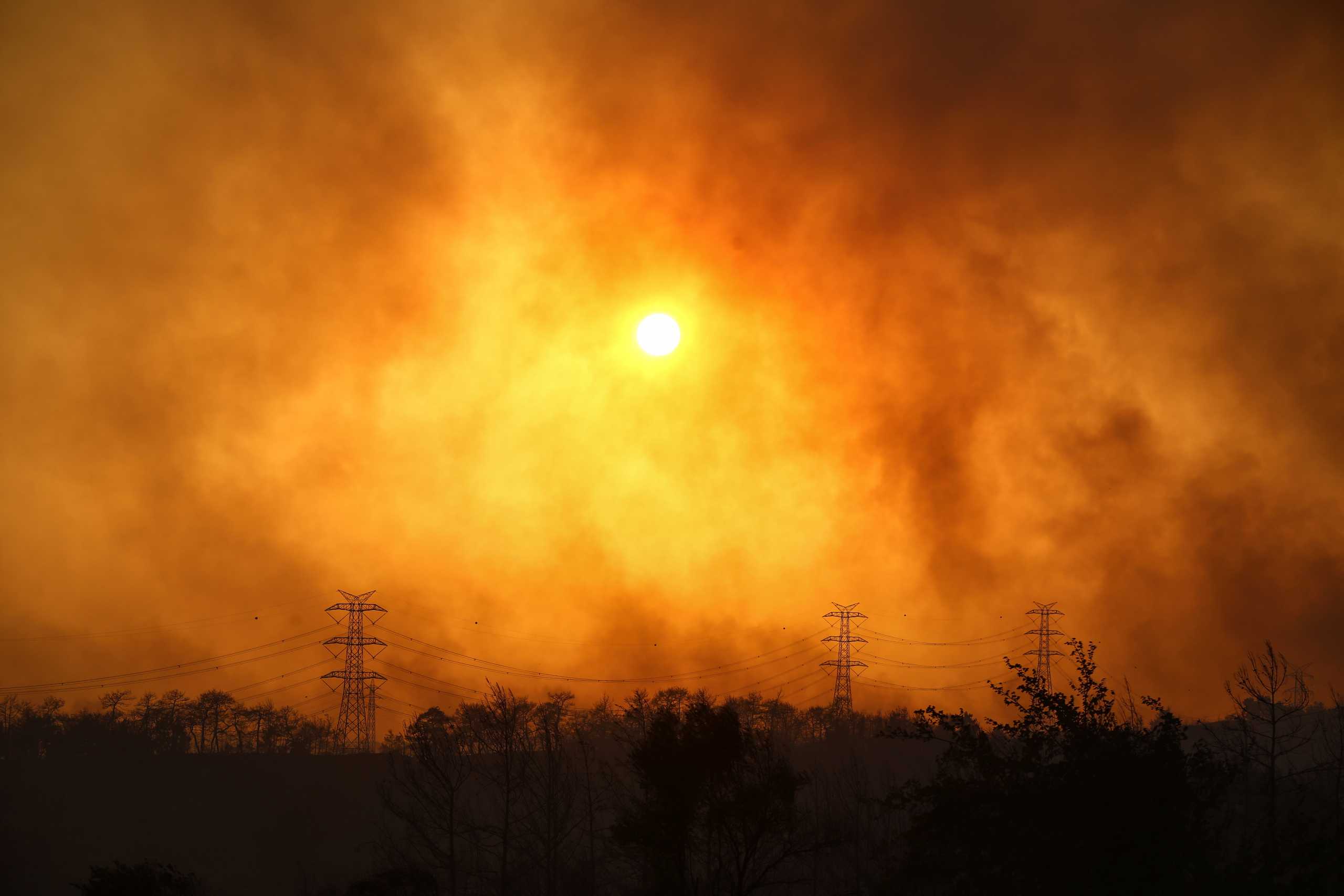
Artificial intelligence enters the battle to prevent forest fires and deal with them through innovative programs that have been developed, and their coordinator is the National Observatory of Athens.
These are two innovative programs “Deep Cube” and “SeasFire” that started in January 2021 and March 2022 respectively and through the use of artificial intelligence techniques, they seek to assess the risk of forest fires in different ways.
As the delegated researcher at the National Observatory of Athens, at the newly elected NTUA Institute of Astronomy, Astrophysics, Space Applications and Remote Sensing, Yannis Papoutsis, confirmed to the Macedonian Athenian News Agency, “The goal of the Deep Cube is to take advantage of the very large wealth of available satellite data Now free and free with artificial intelligence technologies to be able to extract new information from the satellite data, ”and adds that there are various technologies and applications in the Deep Cube, one of which is the assessment of forest fire risks for the next day. “It’s an app that we developed in collaboration with the fire brigade,” he says, referring to the start of fire season today.
Last year, the specific program operated as a pilot program for Greece, but this year its application has been extended to the entire Mediterranean region. “As a country and as an institution (National Observatory of Athens) we have innovated, we are among the first. We will develop it for other countries as well, within the framework of other programs that have been requested of us, in Spain for example, and we will also do it for the wider Mediterranean region,” he confirms.
“Through the innovative software we are trying to solve the complex and multidimensional risk prevention problem as it is a series of environmental and other factors that interact with each other increasing or decreasing risk each time. This is because it is difficult to model so we try to train an AI system to learn All these complex and nonlinear interactions between all these parameters.This can happen by making use of the historical data.We let the model take these parameters as inputs and based on the history of the burned areas we learn these complex interrelationships.And then after we have trained this model we put it In the production phase. On a daily basis, we collect all these parameters and make an estimate for the next day,” notes Mr. Papoutsis at APE-MBE and adds the fire department’s significant contribution to this project.
Based on the “Deep Cube”, the research team at IAADET/EAA’s Orion Lab set out one year later, in March 2022, to develop a second “SeasFire” pilot funded by the European Space Agency. SeasFire is considering assessing wildfire risk but on a different time scale, 2, 3, 4, 5 months from today. “After DeepCube, we took the courage to take it a step further and look at how we can use artificial intelligence to predict the frequency and intensity of forest fires in Europe in the long term. The basic assumption we make is the butterfly effect, that is, something happened sometime in the past, in another part of the planet. It can affect what’s going to happen here and now, and that’s because it’s a big interconnected system with natural processes that influence each other, at different spatial and temporal distances. These are telecommunications. That’s what we’re trying to design at SeasFire as we focus on Europe, but to be able to To assess the risk of seasonal fires in Europe, we need to have information from what is happening in the Atlantic Ocean, what is happening in Africa, what is happening in other regions of the planet in the past to be able to predict what will happen this summer. This is his innovation, “says Mr. Papoutsis to APE -MPE.
Artificial intelligence can help prevent natural disasters
According to Mr. Papoutsis, the scientific community is rapidly advancing in the direction of using artificial intelligence to prevent these phenomena. “The question is how will all these technological tools that make use of artificial intelligence and satellite data win the trust of businessmen. Therefore, trust and understanding must be built in these tools, so that we can use them in practice,” notes Mr. Papoutsis.
In recent years, the scientific community seems to be using AI more and more in conjunction with climate data and satellite data. “There is a lot of mobility and it shows that AI can do a lot. In the coming years we will also have very good results in terms of using AI in the full phase of the fire management cycle. Such applications will continue to emerge and really come out of the scientific community, the question is how They will be integrated into an operational or response plan based on protocols provided by the Civil Protection, Fire Department, OASP or other bodies responsible for managing natural disasters. This is another matter of national policy and a stage of systematic evaluation as well as the joint development of some services,” notes Mr. Papoutsis.

“Avid problem solver. Extreme social media junkie. Beer buff. Coffee guru. Internet geek. Travel ninja.”





More Stories
In Greece Porsche 911 50th Anniversary – How much does it cost?
PS Plus: With a free Harry Potter game, the new season begins on the service
Sony set to unveil PS5 Pro before holiday season – Playstation